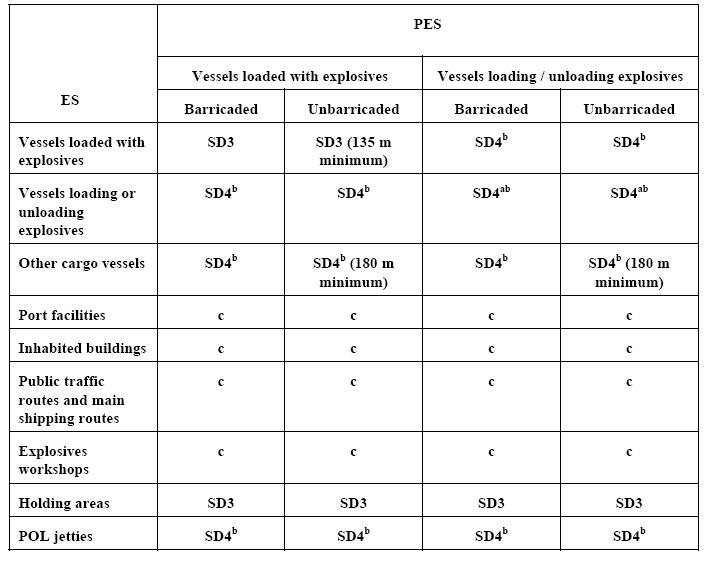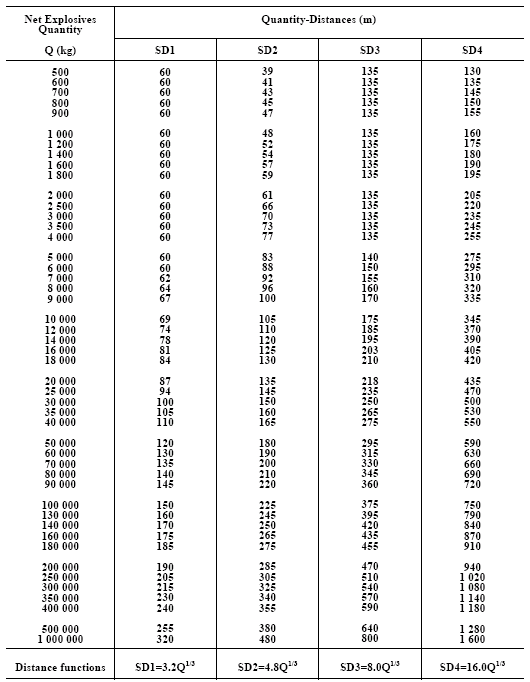Separation Distances at Naval Ports
Author: Thomas N. Taylor, TSO Transport and Storage
MSIAC has been involved in a number of discussions over the years on the subject of Naval Ports. A recent question inquired MSIAC to provide guidance on the layout of ports and the safety distances used between surface ships and submarines.
Two standard practices are provided here for comparison. The first is a NATO Quantity Distance guideline that provides levels of protection to other vessels, facilities and personnel, both the general public and those working in the immediate vicinity was published in Part IV of AASTP-1. Chapter 6 of the guideline was recently re-written by the custodian [USA] for the new edition B to AASTP-1, therefore it serves as a good example. The second practice below is from the NATO Partner Nation Australia. Although the principles appear the same, the Australian Navy procedure permits an additional exception to QD at a Naval Port that will be described below. Both the NATO and Australian practices are outlined below and attached for your convenience.
NATO: In general the guiding principle is to consider each vessel being loaded or unloaded at a berth as equivalent to a storage site for Quantity Distance (QD) purposes, that is; a Potential Explosion Site (PES) or as an Exposed Site (ES) if it is at risk from a PES. These QD guidelines apply to the separation of vessels loaded with military explosives. Examples of such vessels are Lighters, Barges, Small Coastal Craft, Cargo Ships, Transports, Auxiliary Vessels and Warships which presumably includes Submarines.
Warship Exception - warships are ignored for the purposes of QD separation distance provided the conditions below are met (Note: for the purposes of AASTP-1, the definition of warship does not include bulk ammunition carriers.
a. All ammunition is stowed in the designated magazines and/or explosives lockers.
b. All explosive storage areas are secure.
c. No movement of explosives takes place on board the warship.*
d. National and impacted nations’ authorities have accepted this “warship” exception from explosives safety criteria.
* The Warship exception does not apply to the loading, off-loading, or handling of such military explosives on the warship.
The tables below and notes that follow are published in chapter 6 to Part IV of AASTP-1.
The intersection of the PES and ES combination is then applied to the following table, 6-2.




Table 6-2. HD 1.1 SD for Vessels
AUSTRALIA: Overall the guideline is the same as Chapter 6 of AASTP-1, that is all Royal Australian Navy ships are regarded as a Potential Explosion Site (PES). However the big difference is the additional QD exemption permitted for support vessels that carry bulk ammunition such as tankers or amphibious transport ships. The Australian policy exempts Warships and Explosive Ordnance (EO) carrying vessels from QD separation distances if the EO is stored in a certified magazine, and not handled or moved while at berth. If the Explosive Ordnance is not in the ship’s magazine, but stored in general cargo areas, then QD separation rules apply and it must be treated as a PES. The Australian rationale for the additional exemption was based on an assessment of risk, specifically a comparison between the quantity of ordnance loaded on a Nimitz Class Carrier to those stowed on bulk ammunition carriers. They cite that the quantity of aircraft bombs loaded on a Nimitz Class Carrier will be greater thus more High Explosives on board to those stowed on an amphibious ship. Therefore if EO remains stowed and not moved or handled – the same exemption applies.
Another difference in the Australian guideline is the addition of several paragraphs that describe the three Levels of Protection for Hazard Division 1.1. These paragraphs provide the expected effects from Propagation, Damage, and Casualties that would suffer at Protection Levels A, B or C. This is an excellent addition and useful when assessing the likelihood of propagation, probable damage to an Exposed Site and probable number of casualties that will suffer if an accidental event were to occur.
Conclusion:
Many more details about computing the NEQ, the definition of a barricade while on board a ship, separation guidance between vessels and separation guidance from explosives loaded vessels to other exposed targets such as workshops, marshalling areas, general public etcetera are all included in chapter 6 of Part IV to AASTP-1. This10-page document that was originally a US contribution has served as a guideline for NATO Nations for many years. The referenced Australian procedure that reflects their specific needs, particularly the added exemption and description of Protection Levels is worthy to consider when developing a national standard.
References:
a. AASTP-1, Part IV, Chapter 6, Naval and Military Ports, DRAFT March 2014 (encl 1).
b. Australian DEOP 101, Annex G, Quantity Distances for Transfer of Explosive Ordnance in Naval Ports (encl 2)


